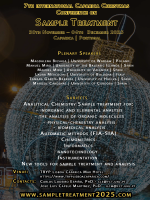Arabidopsis thaliana and omics approaches: a review
DOI: 10.5584/jiomics.v5i1.179
Abstract
Arabidopsis thaliana is a small, flowering plant that is widely used as a model organism in plant biology, mainly because it is the first plant to have its entire genome sequenced. It has since proven to be an ideal organism for studying plant development. Arabidopsis is commonly used as a model plant for genomics, metabolomics and proteomics studies, and more recently it has been utilized in metallomic studies. Because of its widespread applications, many methods for Arabidopsis sample preparation, analytes separation and data quantification have been explored. This review briefly describes the Arabidopsis thaliana characteristics, the developed researches and the primary methods using this plant in different fields of OMICS. In the future, the availability of Arabidopsis genomic information may result in its continuous development for nanoparticles and metallomics studies.









